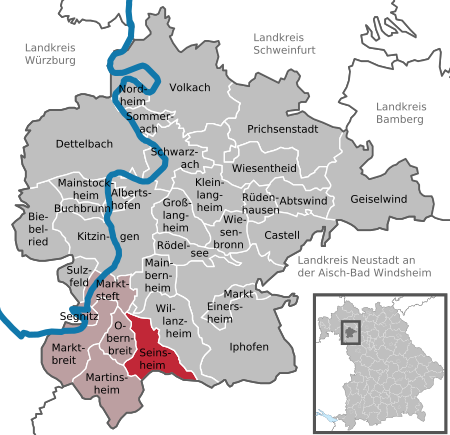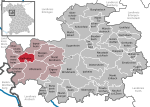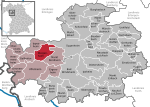Seinsheim
Franconian CircleKitzingen (district)Lower Franconia geography stubsMunicipalities in BavariaSeinsheim family

Seinsheim is a municipality in the district of Kitzingen in Bavaria in Germany. It is best known for its connection with the comital Seinsheim family (german), which died out in 1958 except for the princely House of Schwarzenberg branch of the family.
Excerpt from the Wikipedia article Seinsheim (License: CC BY-SA 3.0, Authors, Images).Seinsheim
Friedhofstraße, Uffenheim (VGem)
Geographical coordinates (GPS) Address Nearby Places Show on map
Geographical coordinates (GPS)
| Latitude | Longitude |
|---|---|
| N 49.616666666667 ° | E 10.216666666667 ° |
Address
Kläranlage Ippesheim
Friedhofstraße
97258 Uffenheim (VGem)
Bavaria, Germany
Open on Google Maps










